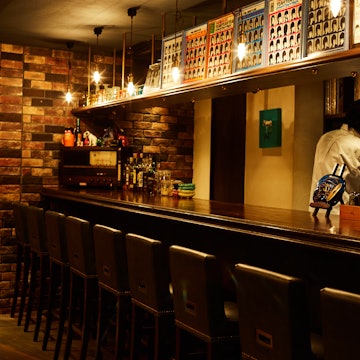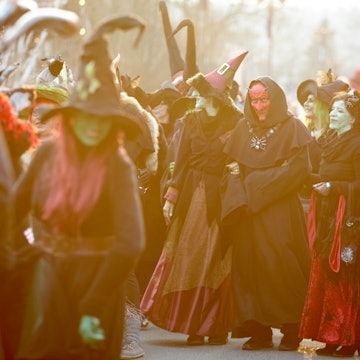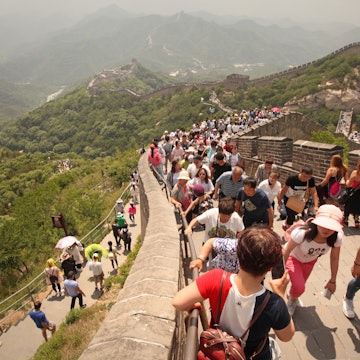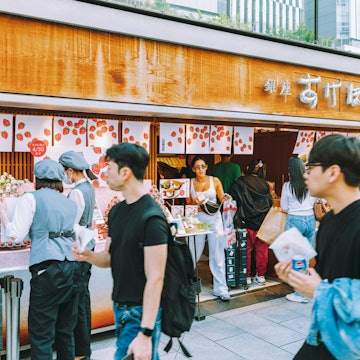

Spending the night in an historic onsen ryokan, tasting some of Japan's finest sake, and cycling quiet roads through the rice fields are just a few reasons to visit Daisen, an undertouristed pocket of Japan’s northern region of Tōhoku. And at just three hours from Tokyo by bullet train, it makes for an easy retreat from urban life.
Staying in onsen ryokan Shōhōen
Reason enough to head north from Tokyo, a stay at Shōhōen is a Daisen highlight and a treat for travellers looking for a traditional onsen ryokan (hot-spring inn) experience in off-the-beaten-track Japan.
Shōhōen was originally built as a home for the Oyamada family in 1917, after the previous one was destroyed by earthquake. The Oyamadas – wealthy landowners of the region – took no chances with the new house, employing the most skilled temple and shrine carpenters of the day to construct something to withstand future quakes. So clever was the design, the 103-year-old building actually meets Japan's present-day earthquake-proofing requirements.

Sturdy local cedar features in each space, from the 16m-long floorboards of the lobby (unpolished but gleaming from a century of sock and slipper traffic) to the ingenious removable pillars in the large dining room. Sliding doors on the ground floor open up onto a delightfully unkempt garden, where 400-year-old firs stand tall, having lived on these grounds about as long as the Oyamada family. The ryokan is run today by the 16th generation.
There are only seven guest rooms, and no TVs, so after nightfall all is quiet but for the breeze, the insects, and the occasional sound of fellow guests padding down the corridors in their split-toed socks.
As is typical at a ryokan, a stay also includes dinner and breakfast. Shōhōen puts on an impressive spread, with dinner a multi-course event of seasonal dishes: fish and crab from the river Omono-gawa (which flows just behind the property), mountain vegetables, bubbling pork and tofu hotpots, and local Akita rice, may all be on the menu.
But perhaps the biggest draw of Shōhōen is found tucked away outside – two cypress-wood rotemburo (outdoor baths). There are few more relaxing ways to round off a day than soaking in mineral-rich hot-spring water while breathing the lemony scent of cypress and gazing up at the trees. Guests can reserve a time to use a bath privately. The hardest decision is choosing between the square or the round one.
The welcoming ryokan owners speak just a little English, but have carefully prepared information for English-speaking guests, including a phrase list to help with important conversations (like arranging to use the rotemburo and setting your dinner time). Shōhōen is near Mineyoshikawa Station on the Ōu main line. A free pick-up can be arranged when you make a reservation.

Cycling through the fields
In the heart of Akita Prefecture, one of Japan’s largest rice-producing regions, Daisen is characterised by its expanses of rice farmland, stretching out in broad plains that eventually meet the containing embrace of the mountains. Depending on the season it’s a landscape of soft greens and golds, reaching an almost luminous green in summer before harvest. Here and there small clutches of headstones punctuate the fields – the family gravesites of local farmers. It’s the ideal place to explore on two wheels at your leisure.
Bikes can be rented from the Daisen Tourist Information Centre in Ōmagari, where you can pick up an English map detailing several suggested routes that lead through the countryside, town and along the banks of the Omono-gawa. NorthTime Bikeway also has downloadable maps for cycling courses in Daisen and surrounding areas.

Touring Daisen’s sake breweries
Quality rice, an abundance of fresh water, warm humid summers and cold snowy winters makes Akita Prefecture prime sake-making country. Daisen alone has nine breweries.
Some brewers also still use a sakafune method of slowly straining the rice to avoid ‘stressing’ it in the accordion-style modern machine presses. The use of the sakafune is rare in Japan, typically reserved for premium tipples only. While breweries that offer tours accept visitors most of the year, winter is an especially good time to visit as this is when all the action happens.

A good place to start a sake education is at Suzuki Brewing (known for its Hideyoshi-brand sakes), in the business for more than 300 years and with a native Oregonian working on-site conducting tours for English speakers. Tours of the facilities include free tastings and a look at the brewery’s cultural collection. Even if you're not a sake enthusiast, Suzuki is worth a look just for the garden, where a gnarly katsura tree still reigns after 330 years. Reserve via the website (give them at least a couple of days notice for an English-speaking guide).
A short drive away through the rice fields is another great Daisen brewery, Kariho, established in 1913 as an addition to the 1865 Dewatsuru brewery family. Here all the sake is made using the slow sakafune straining process, which you can see on a guided tour. A tour with simple English explanation, followed by a taste of three sakes is ¥1000 (about USD $10); send a reservation request via the contact form on their website.

Discovering local culture and history
The Ikeda Family Gardens are the perfect setting for a contemplative stroll, particularly during the changing colours of spring and autumn. These grounds were once the residence of one of Tōhoku's most prominent families (the Ikedas still have a home just next door), and some buildings remain within the garden, including a 1922 Western-style manor. The gardens also claim Japan's most impressive yukimi (legged) stone lantern, at a hulking 4m tall, so heavy it's said to have been transported here on skis.

Daisen also has its share of shrines and temples telling the spiritual history of the region. Shintō shrine Karamatsu-jinja, near Ugo-Sakai Station on the Ōu main line, holds the stories and hopes of thousands who have quietly prayed here for safe pregnancies and births.

At the end of a row of cedars, the shrine was built in 1630, though its inner structure dates from the 1300s and was brought here from a nearby mountain. Inside are the countless fabric 'ropes' and metal bells that have been donated by grateful parents over the years. (The ropes represent the ones that hang outside shrine entrances, used to ring the bell and summon the gods.) Over time, the fabric of the older donations has deteriorated, leaving only the bells hanging in thick metallic braids from the ceiling.
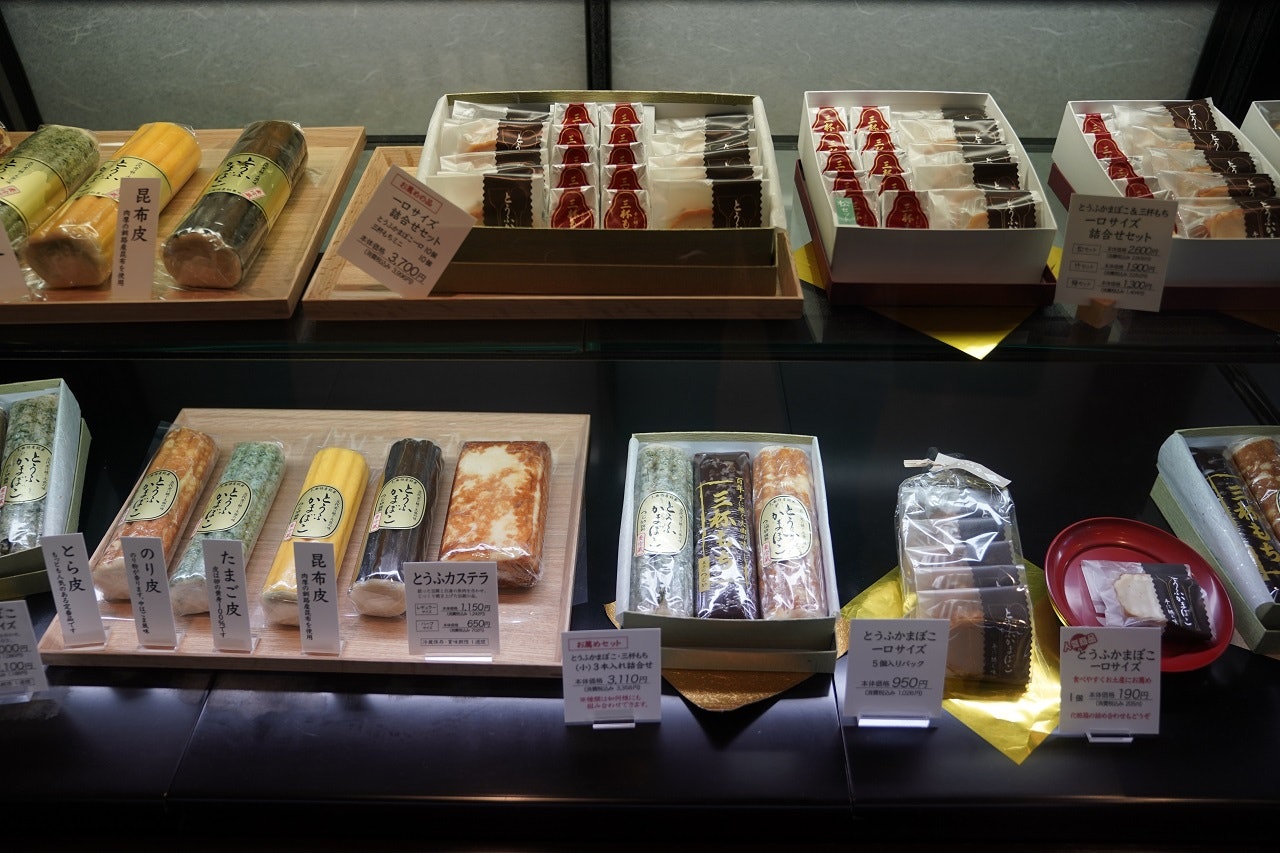
Trying and buying local specialities
One of the pleasures of visiting the quieter corners of Japan is discovering local products hard to come by elsewhere. The small Daisen town of Ōmagari is not much more than a few narrow streets, but there are some surprises for those who take the time to look. Not far from the station is the slate-roofed wooden facade of sweet shop Tsujiya .
The shop is 100 years old, but the family has been in the sweet-making business since the current president's great great grandmother started making tofu-kamaboko for local celebrations. Tofu-kamaboko is a kind of processed fish cake combined with tofu, formed into a scroll and sliced. This savoury treat has long been served on special occasions in Akita Prefecture, but the Tsujiya twist to make it slightly sweet. It's one of their specialities, sold alongside sweet-bean cakes, tofu castella and other handmade Japanese goodies.

A whole range of other Daisen and Akita products – from fresh pumpkins to pickles to crafts and several Akita dog souvenirs – are sold at the roadside rest stop Kyowa Michi-no-Eki, about half-way between Ōmagari and Akita City on route 46. While 'roadside rest stop' might conjure up images of forgettable convenience stores in other parts of the world, regional rest stops in Japan can be some of the best places to find unique, locally made goods.

Kyowa also goes one better with an attached pottery works, where those with a little more time and creativity to burn can make something of their own – decorate a cup, or craft a cup from scratch on the wheel, for between ¥3000 and ¥4500 (plus the cost of mailing it to you once it's been baked). There's very little English spoken, but the master potter very patiently demonstrates. It's best to call (or have your accommodation call on your behalf) to make a reservation (090-2880-1054).
Getting there and around
Daisen is served by shinkansen from Tokyo, stopping at Ōmagari, which connects to the Ōu main line and Tazawako line. Hiring a car is most convenient for exploring the area, though if you’re only going to and from Shōhōen ryokan, you can be picked up and dropped at the station. There are a couple of rental car companies in Ōmagari near the station.
Laura Crawford travelled to Daisen with the support of the Ōmagari Chamber of Commerce. Lonely Planet writers do not accept freebies in exchange for positive coverage.







